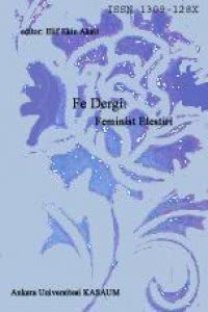Gore Vidal’in "Kent ve Tuz" Eseri’nin Kuir Kültürü ve Camp Talk Çevirisi Üzerinden Çeviri Eleştirisi
çeviribilim, Camp Talk, LGBT, kuir, Kent ve Tuz
Translation Criticism of Gore Vidal’s The City and The Pillar through Queer Culture and Camp Talk Translation
Translation Studies, Camp Talk, LGBT, Queer, The City and The Pillar,
___
- Aksoy, Berrin. “Çeviride Çevirmen Seçimleri Işığında Çeviri Eleştirisi” Hacettepe Üniversitesi Edebiyat Fakültesi Dergisi Cilt:18 Sayı 2 1-16
- Baer, Brian James ve Klaus Kaindl (ed.) Queering Transation, Translating The Queer: Theory, Practice, Activism (New York: Routledge 2018)
- Chamberlain, Lori. “Gender and the Metaphorics of Translation” Signs Vol 13, No.3 1998 454-472
- Çakırlar, Cüneyt ve Serkan Delice. Cinsellik Muamması Türkiye’de Queer Kültür ve Muhalefet (İstanbul: Metis 2012)
- Doğan, Aymil. “Sözlü ve Yazılı Çeviri Odaklı Söylem Çözümlemesi” (Ankara: Siyasal Kitabevi, 2014)
- Escoffier, J. (2015). New York City. 1st ed. [ebook] GLBTQ, pp.4-5. Available at
- Giustini, Elena Deborah. Gender and Queer Identities in Translation. From Sappho to Present Feminist and Lesbian Writers: Translating the Past and Retranslating the Future
- GL, K. (2015). Arzu. KaosQueer+, (3), pp.45, 78.
- GL, K. (2015). Beden. KaosQueer+, (2), pp.6, 86, 138.
- GL, K. (2015). Dosya:Queer Çalışmaları. Kaos GL Dergi, (144), pp.17, 31.
- Harvey, K. (1998). Translating Camp Talk. The Translator, 4(2), pp.295-320.
- Harvey, K. (2002). Camp talk and citationality: a queer take on ‘authentic’ and ‘represented’ utterance. Journal of Pragmatics, 34(9), pp.1145-1165.
- http://www.glbtqarchive.com/ssh/new_york_city_S.pdf [Accessed 12 Apr. 2017].
- Kontovas, Nicholas. LUBUNCA The Historical Development of Istanbul’s Queer Slang and a Social-Functional Approach to Diachronic Processes in Language, 2012
- Kulick,Don. “Gay and Lesbian Language” Annual Review of Anthropology Vol. 29 (2000), pp. 243-285
- Larkosh, Christopher. Re-engendering Translation’ Transcultural Practice, Gender/Sexuality and The Politics of Alterity (New York: Routledge 2014)
- Munday, J. (2010). Introduction to Translation Studies. 2nd ed. New York: Taylor&Francis Group, pp.125-130.
- T. Anna. “The Opacity of Queer Languages” e-flux journal #60, 2014
- Van Den Broeck, Raymond Second Thoughts on Translation Criticism' The Manipulation of Literature: Studies in Literary Translation Theo Hennans (Ed.)( New York: St. Martins Press. 1985) 54-63
- Vidal, G. (1948). The City and The Pillar. 1st ed. London: Panther Books Limited, pp.7-157.
- Vidal, G. (2010). Kent ve Tuz. 1st ed. İstanbul: Helikopter, pp.9-210.
- Von Flotow, Luise. Translation and Gender Translating in the ‘Era of Feminism’ (Londra: Routledge 1997)
- ISSN: 1309-128X
- Yayın Aralığı: 2
- Başlangıç: 2008
- Yayıncı: Ankara Üniversitesi KASAUM
Gore Vidal’in Kent ve Tuz Eseri’nin Kuir Kültürü ve Camp Talk Çevirisi Üzerinden Çeviri Eleştirisi
‘Taşra’ Üniversitesinde Feminist Pedagoji: Ne Kadar Mümkün?
Judith Butler'ın Nefret Söylemi Eleştirisi: Dildeki Performatif ve Yaralayıcı Dil
Toplumsal Cinsiyete Duyarlı Bütçe Politikalarının Feminist Kökenleri
TBMM Birleşimlerinde Özgecan Aslan Cinayeti
Nüket PAKSOY ERBAYDAR, Aysun BALSEVEN ODABAŞI
Heteronormatif Olmayan Bağlılıklar: J.M. Coetzee Özkurmacasında Melankoli ve Yakınlık
NÜKET PAKSOY ERBAYDAR, AYSUN BALSEVEN ODABAŞI
Tanzanya'da Kadın Sünneti: Kadınların Toplumdaki Konumunun Yeniden Değerlendirilmesi
